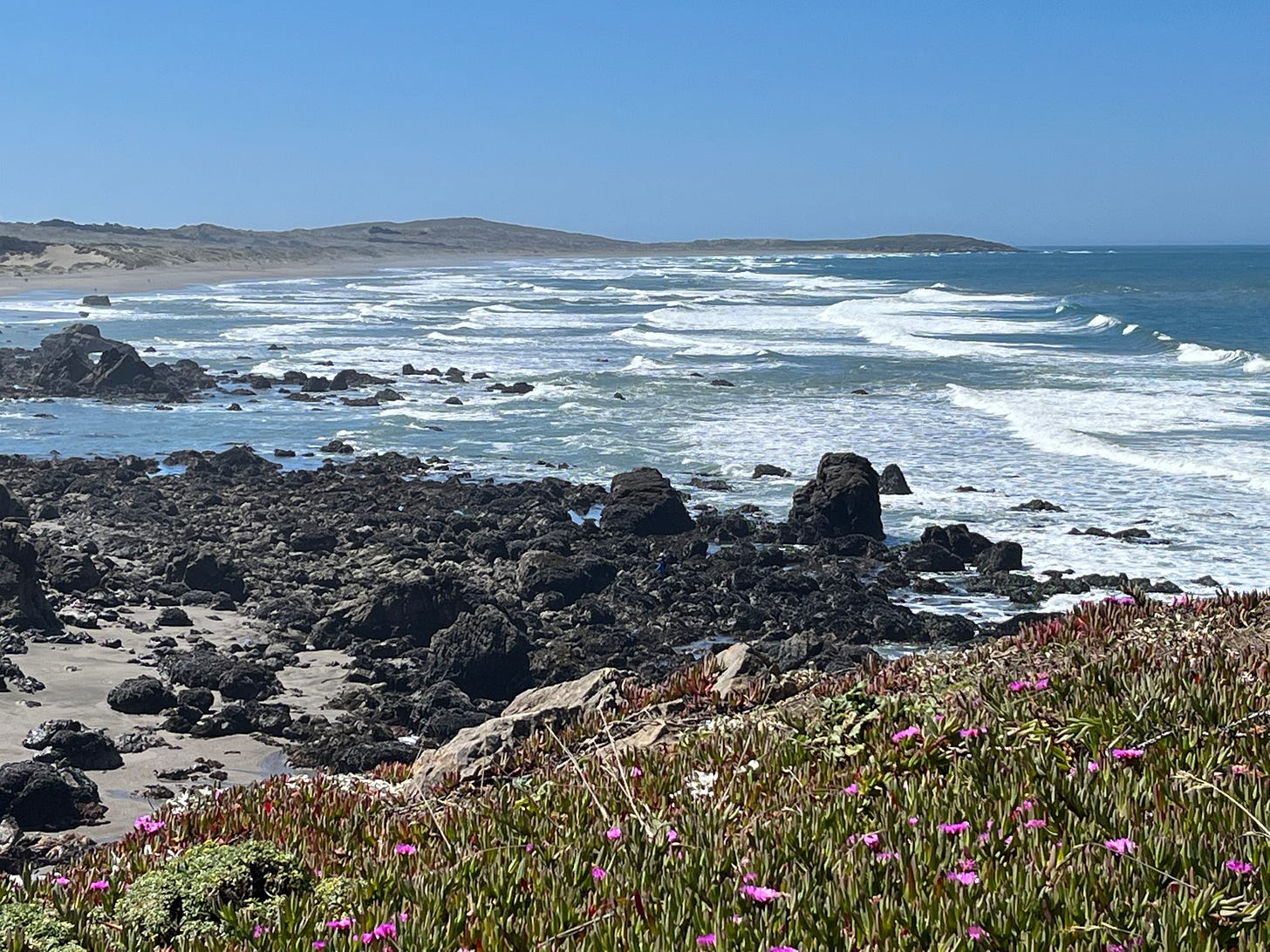A century-old fish swims the Pacific coast
Buying rockfish for dinner and discovering a fish mystery

You’re at Mother E, a free newsletter exploring our connections to nature and other species in a climate-changing world. If you missed the last edition, it’s here: Where does hope fit in?
If this newsletter gets shortened by an email program or the images don’t show, you can read it on the website here. To get Mother E coming to your email box every other Sunday, sign up below.
I STOPPED AT A FISHERMAN’S TRUCK parked in town this week to see what he had caught. The fisherman, Fakrul, showed me his catch of lingcod and smaller orange Canary rockfish. His permitted and sustainable fishing uses hook and line, not nets.
He spoke of the fish with a fondness that revealed a close association between predator and prey and respect for the life he took. He also admitted that the fish he caught was a frequent food source for his family.
Whenever I visit his fish truck, he suggests a new way to cook the fish. This time, he said he fried his dinner rockfish the previous night using a standard breadcrumb and egg coating seasoned with garam masala, an aromatic Indian blend of spices.
What he told me next grabbed my attention. Some varieties of rockfish, such as the rougheye, can live to be 120 years old or more. I must have looked concerned about eating a century-old fish, so he assured me the two small Canary rockfish I bought were only several years old. NOAA says this rockfish species can live to 75 years or longer.
I read that one rockfish caught in Alaska was 205 years old, born around the time Mississippi became a U.S. state and just a few years after the Louisiana Purchase. What ocean changes that old fish would have seen, from the age of wooden sailing ships and abundant ocean life to nuclear submarines and oceans with gyres of plastic debris. The last two hundred years has altered the ocean perhaps more than any other time in history, and that rockfish and others like it witnessed those changes.
Over 100 varieties of rockfish swim in the cold waters of the North Pacific. Nearby Bodega Bay has 45-55 rockfish species, making it a prime hangout for this fish population, probably due to the rocky outcroppings in the coastal waters.
This group of fish (genus Sebastes) ranges in color from charcoal black to green, orange, or red. They’re one of the most colorful fishes found in the North Pacific. Their name implies an old and venerable lineage.
The genus name is derived from the Greek Sebastos, an honorific used in ancient Greek for the Roman imperial title of Augustus… which Cuvier translated as "august" or "venerable."
Wikipedia Sebastes
As the fisherman expertly filleted my fish, he chatted about rockfish in general, which ones were legal to catch, and which were protected. He said he reported his catch electronically before he brought it ashore, as the Dept. of Fish and Game monitors fish "take" and populations.
In the year 2000, the rockfish numbers had dropped from overfishing, so authorities halted fishing permits. By 2015 the population rebounded, and limited permits were reissued. It's nice to know that NOAA and the Dept. of Fish and Game monitor the fisheries to protect the fish population.
After I returned home, I looked up Canary rockfish and was surprised to see they have some unusual characteristics besides longevity.
Lots of eggs: Canary rockfish can produce 250,000 to 1.9 million eggs, more than most rockfish.
Births live young: “Fertilization and embryo development is internal and female rockfish give birth to live larval young,” according to NOAA's page on Canary rockfish. These tiny larvae sink to the ocean floor and hide among the eel grass and rocky outcroppings. Many of them are swept away by currents and eaten by other fish before they can grow up.
Late breeders: Many varieties do not come to sexual maturity until they are 5-7 years old, and a few rockfish species do not reproduce until they are 15-25 years old.
Rockfishes are… a comparatively young group of fishes dating back 23-34 million years before the present. For comparison, sharks are 450 million years old. Rockfishes range in habitats from the intertidal zone all the way down to ~3,000 m (9,800 feet), making some rockfishes essentially deep-sea fishes. By and large, they are benthic species that make their living in, on, and around benthic rock outcroppings. Not surprisingly, then, a favorite 'hangout' for rockfish (and salmon) is the Farallon Islands, a complex reef system just off the mouth of San Francisco Bay."
https://californiawaterblog.com/2020/10/11/rockin-with-the-rockfish/
It's clear that rockfish are an important part of the Pacific Ocean ecosystem, and I had to reevaluate the ethics of eating a fish that could live for many decades. I also wondered what their secrets of longevity are, that some may live longer than humans. We have barely begun to learn about the million hardy and unusual-looking creatures living in the sea.
Life in the benthic deep has always held mysteries for land-based humans due to our limited access.
We're now in the United Nations Decade of Ocean Science for Sustainable Development (2021-2030). The goal this decade is to understand better the many ocean species and how complex ocean systems operate so we can build a more sustainable relationship.
And how was my Canary rockfish dinner? It was a succulent and delicate white-fleshed fish. But besides providing a delicious meal, I felt grateful that the fish and fisherman had stimulated my curiosity and awe for one of the ocean’s venerable species.
Robin Applegarth
We know more about the surface of the Moon and about Mars than we do about [the deep sea floor], despite the fact that we have yet to extract a gram of food, a breath of oxygen or a drop of water from those bodies.
Paul Snelgrove, Professor of Oceanography
I like to hear from readers!
You can comment at the button above, respond to this email to reach me privately, or reach out on Twitter @RobinApplegarth.
Thank you for reading Mother E and for your involvement in making the world a better place!
Not subscribed yet? Mother E is a free newsletter about our connections to other species in a climate-changing world. Sign up below to have it delivered to your email box every other Sunday.




Robin, thank you for an informative and enjoyable read.